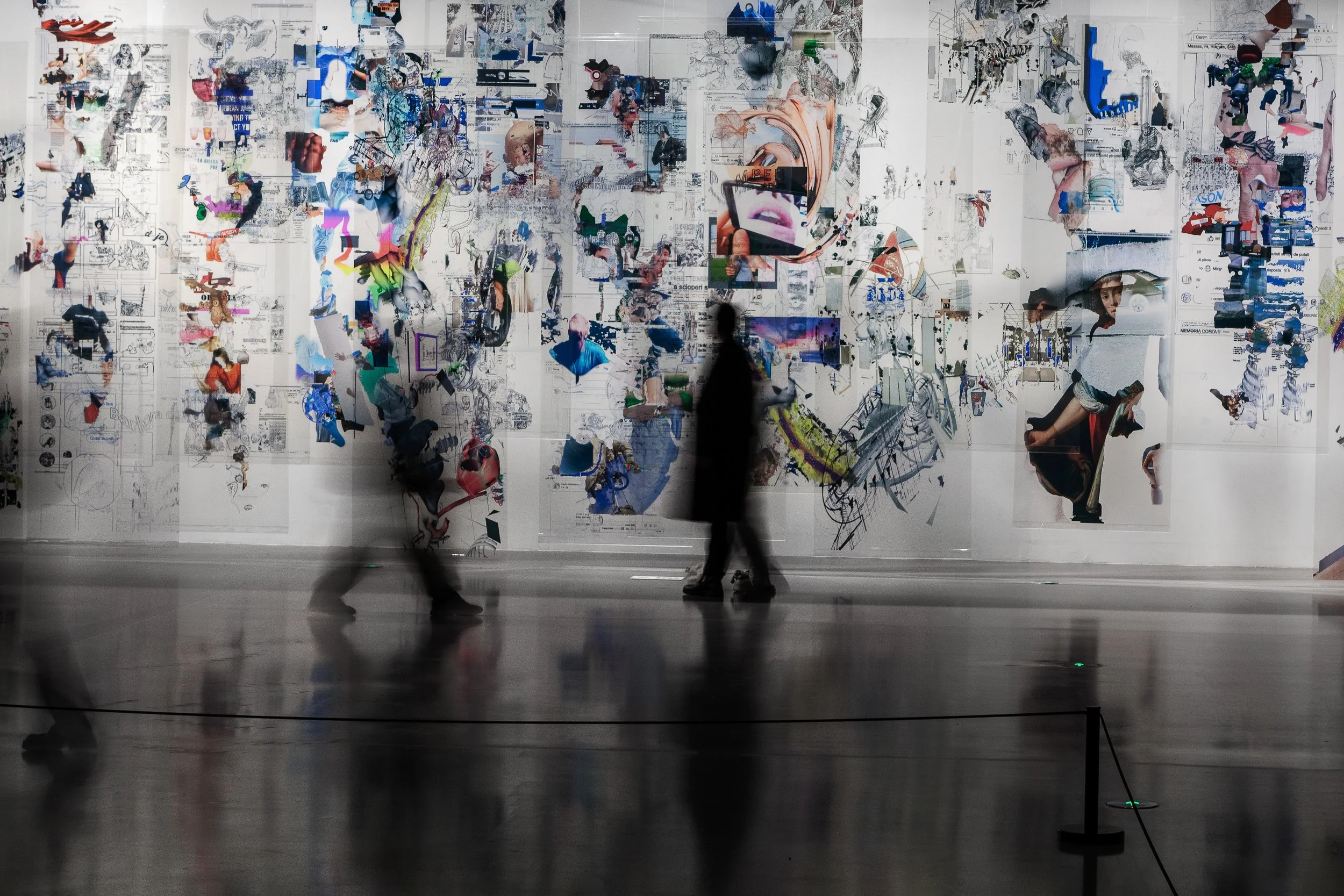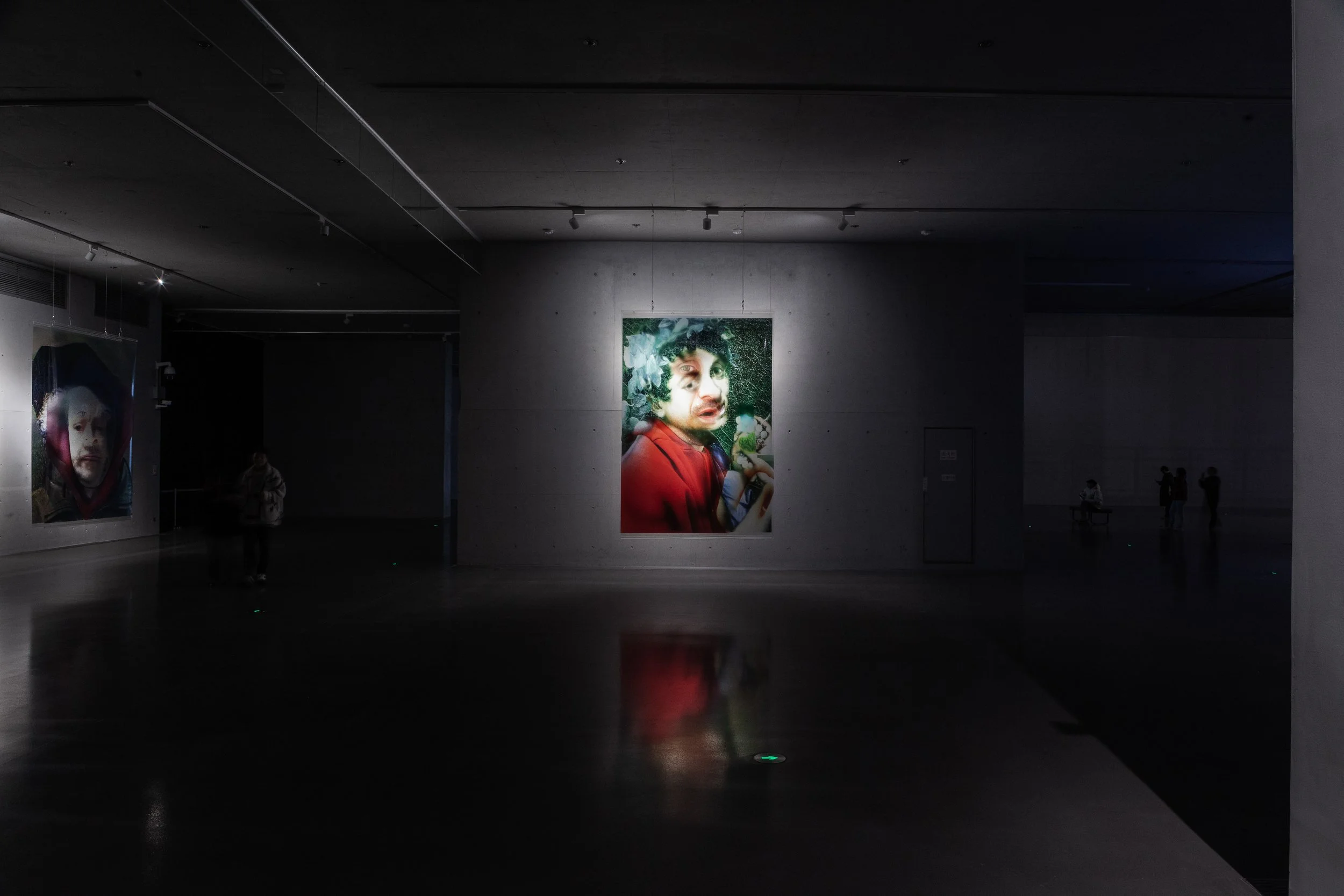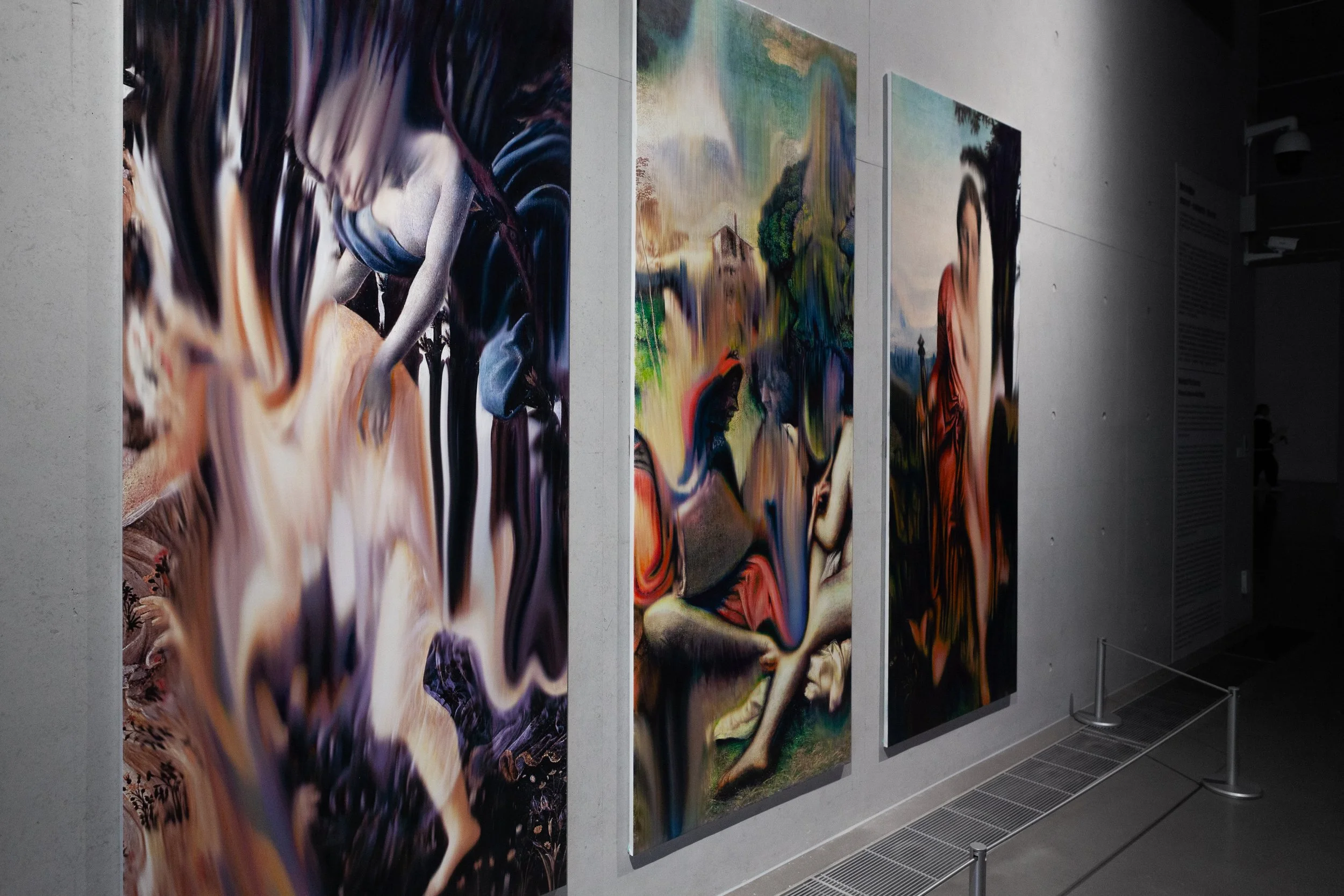LAYERING THE GAZE
IMAGOMORPHOSIS + INSTANT MIMESIS + MELTED PICTURES
within Extension of Selves by Lumen Art Projects
Wuhan Art Museum | Qintai | China | Jan. 2024
Text by Domenico de Chirico
Layering, understood in purely visual terms and arranged on the basis of spatial-temporal coordinates, is the underlying focus of this new exhibition project by Italian artist Pietro Catarinella (born. 1983) at the magnificent spaces of the Qintai Art Museum in Wuhan, China. It is an overtly dystopian yet remarkably rational path that, nimbly insinuating itself between the tangible and the “numeric,” aims to enshrine the principles of the notion of multiplicity, conceptualized as a construction of meaning on many levels.
Diffusely positioned at the center of our visual and cognitive world, it proposes itself as a sort of revisitation of “the society of the spectacle,” as theorized by the French intellectual Guy Debord in which the modern society of images is described as a mystification aimed at justifying the current social relations of production. Etymologically, the word image finds its foundation in the idea of doubling, since it itself constitutes the reproduction that coincides first with the birth of consciousness, arising ab initio as an intensification of the real, and then with recollection. Doubling constitutes, thus, the crossroads of Pietro Catarinella’s artistic research to such an extent that it doubles itself. What ensues is, in fact, on the one hand, the multiplication of the image investigated from a mnemonic and perceptual point of view, in reference to the overloaded world of the Internet; on the other hand, the depiction of faces created through unique self referential gestures that, in turn, become the object of another gaze; and, finally, the dichotomous dissolution between a pictorial image and its digital processing, the result of an incestuous union between cerebral and corporeal investigation.
The structure of this path becomes as intricate as it is linear, depending on the perceptual stage touched upon, namely: from the three-dimensional digital landscape installation IMAGOMORPHOSIS that portrays the captious mechanisms—both perceptual and mnemonic—relating to the crude and contaminated environment of the Web, composed of several transparent digital prints developed in a vertical format and superimposed; through the series of merged portraits INSTANT MIMESIS in which the self-portrait of a well-known painter of the past is related to a selfie taken while Catarinella himself is observing it; to MELTED PICTURES, a series of dissolved paintings, born from the fusion of several masterpieces of the past and thanks to which a new idea of hybrid painting emerges—the astonishing result of the incestuous union between the mechanical brain and the organic body. An act of oblivious censure of the past, homage, and outrage to these infamous masterpieces of undoubted worldwide art-historical value.
So, is there a boundary between two superimposed images or does the concept of superimposition already contain a dissolution of perimeters and consequently of the various stages of consciousness? From a philosophical, and more specifically, phenomenological point of view, inseparable from the artistic one and more than ever in this case, the first way in which perceptual experience manifests itself, is through the idea of the body. How, then, can it act in a postmodern world in which the flow of images is so fast and varied that it itself becomes an image? This is what is evident from this exhibition, a body of works that, thanks to a branched scheme in three acts, makes the visual flow the undisputed center. Indeed, the eye no longer rests on the specific, intact image. Instead, the focal point becomes the fruit of the union of all the liminal points that connect the various images and, consequently, of the fluid whole that emerges. It is the result of what we can define as collective memory, a common visual feeling, simultaneous and colorful, utopian and dystopian, that uninterruptedly shakes the foundations of the birth of the image by endlessly multiplying its results.
Echoing the Enlightenment philosopher Voltaire, regarding his novel Candide, or Optimism, Pietro Catarinella, in this astonishing expository chapter, disrupts optimistic metaphysical theories about human life, preferring a disenchanted view of the world. Stigmatizing that deafening pretense of wanting to live in the best of all possible worlds, he wisely describes the current stage of truculent decadence understood as a consequence of the ever-increasing technological progress, which has imposed itself, over the years, in a way that is certainly refutable. And perhaps this is why we still ask,
“Oh, best of all possible worlds, where are you now?”*
* from Candide, or Optimism (Candide, ou l'Optimisme), a philosophical novel by Voltaire,1759Imagomorphosis, general view
Instant Mimesis, general view
Melted Pictures, general view
Scrolling Through, video installation, general view










